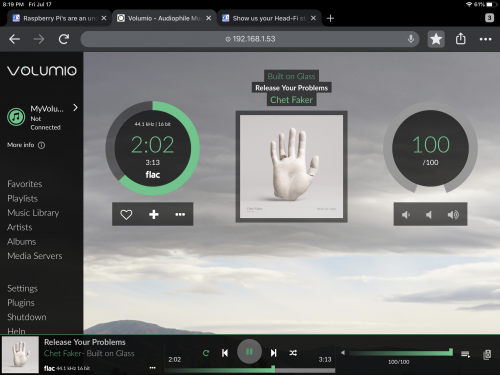Can't answer all of your question, but some I can:Maybe somebody here can answer my questions, very hard to find answers:
1. I don't mind paying a bit more, is there a DAC-less streamer that is clearly better than both PIE2AES and Digione signature that I should look at for use with Hugo2?
2. What's the best way to connect the PIE2AES to Hugo2 for maximum sound quality?
3. What's the best way to connect the Digione Signature to the Hugo2 for the best sound quality?
4. Will I be able to stream bandcamp/youtube/jriver flacs from my Macbookpro to these streamers? I haven't really heard anyone talk about using these services with these streamers.
5. I understand that the Digione signature needs 2 PSUs, does that mean that 1 Shanti can power it or do I need to purchase 2 battery packs? Bit confused about the power situation.
6. On the software side, given my use cases above what do you guys recommend, volumio, Ropiee, something else?
7. Since I already have a Hugo2 would it make more sense to get the 2go? How do devices like PIE2AES and Digione Signature compare to the 2go?
Thank you
ad 1) I believe PI2AES is appropriate for use with Hugo2. I don't think more expensive streamers would bring significant SQ improvement.
ad 2) I tried optical and coax, they sound the same. My vote is for optical, as it should be more immune to interferences and connector issues.
ad 4) There is generic AirPlay option in both Ropiee and Volumio, but it supports max. 16/44.1 in audio resolution. In fact it shouldn't present any real problem for YT videos, bandcamp etc. Higher resolution is available only from Mac application supporting DLNA or ROON.
ad 6) Ropiee is rock solid, but it expects playback control on external application (for example on Mac - Spotify, ROON, Browser etc.). Volumio includes control application which you approach on volumio.local via browser or from iPad/iPhone. And Volumio plays FLAC files directly, as well as internet radios.
ad 7) No idea. I wouldn't expect big differences in SQ. Depends if you potentially replace Hugo, then separate transport (streamer) is an advantage.
Last edited:




